
Grevillea flexuosa, commonly known as zigzag grevillea or tangled grevillea, is an endangered shrub endemic to Western Australia.
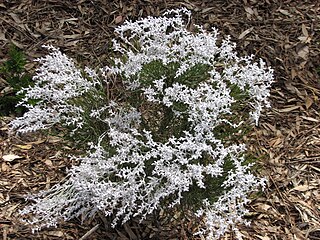
Conospermum stoechadis, commonly known as common smokebush, is a shrub endemic to Western Australia.
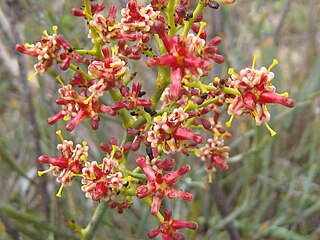
Stirlingia latifolia, commonly known as blueboy, is a plant endemic to Western Australia.

Acidonia microcarpa is a species of shrub in the plant family Proteaceae. It is the only species in the genus Acidonia. It is endemic to the south coast of the Southwest Botanic Province of Western Australia.
Plantago debilis is a species of herb native to Australia. Common names include shade plantain and weak plantain.
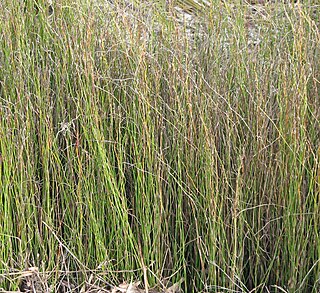
Lepyrodia is a plant genus in the family Restionaceae, described as a genus in 1810.
Empodisma is a genus of herbaceous rush-like plants in the family Restionaceae first described in 1974. It is native to Australia and New Zealand.
Hypolaena is a plant genus in the family Restionaceae, described as a genus in 1810. The entire genus is endemic to Australia.
Hypolaena fastigiata, commonly known as tassel rope-rush, is a plant species in the family Restionaceae. It is endemic to Australia.
Needhamiella is a monotypic genus in the family Ericaceae. The sole species, Needhamiella pumilio, is a small shrub that is endemic to Western Australia.
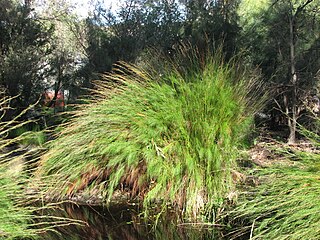
Baloskion tetraphyllum is a rush-like plant in the family Restionaceae. Common names include tassel rope-rush, plume rush and Australian reed.

Lomatia tinctoria, commonly known as guitar plant, is a shrub to about 2 metres tall of the family Proteaceae. It is one of three species of Lomatia endemic to Tasmania, the others being L. polymorpha and L. tasmanica. Lomatia tinctoria is closely related to L. polymorpha, with which it sometimes hybridises. Its leaves are divided, while those of L. polymorpha are simple.

Allocasuarina thuyoides, commonly known as the horned sheoak, is a shrub of the genus Allocasuarina native to a large area in the Mid West, Wheatbelt, South West and Goldfields-Esperance regions of Western Australia.

Desmocladus is a genus of herbs in the family Restionaceae, all species of which are endemic to Australia, and found in Western Australia and South Australia. In this genus, the stems are the principal photosynthesizers.
Baloskion longipes, common name dense cordrush, is a dioecious perennial herb in the Restionaceae family, found in southeastern New South Wales.

Chaetanthus aristatus is a species of rush. It is found in Western Australia.
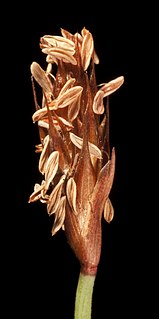
Chordifex laxus is a rush species of the genus Chordifex in the family Restionaceae. It is endemic to the south-west of Western Australia.

Chordifex microdon is a rush species of the genus Chordifex in the family Restionaceae, native to Western Australia.
Leptocarpus laxus is a rush species of the genus Leptocarpus in the family Restionaceae. It is endemic to the south-west of Western Australia.
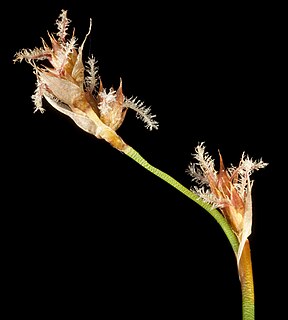
Sporadanthus rivularis is a sedge-like herb in the Restionaceae family, native to Western Australia. It is a spreading perennial growing from rhizomes to heights of from 1 to 1.2 m, on black sands and clay along creek edges. It is a dioecious species.














